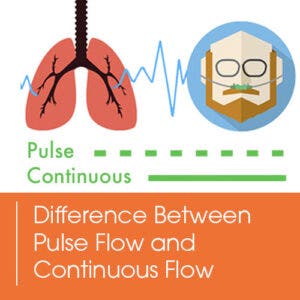As many of you may have heard (or even unfortunately experienced), a hurricane, deemed “Harvey,” hit the coast of Texas, near Corpus Christi. The long road to clean-up and recovery is just beginning for many.
Natural disasters, such as flooding, can be extremely dangerous for people of all ages, especially if you suffer from any lung or breathing related illnesses. Even after the flood water recedes, there are conditions that can put your lung health at risk. How can you stay safe during these uncertain times? Keep reading for our top five things you’ll want to know during a flooding weather emergency.
1. Evacuate if Directed
It is never advised to try and wait out the storm; especially if you have been advised to evacuate. Always do your best to be proactive when severe weather is about to hit. Try and make arrangements with family, friends, or acquaintances to assist you, if need, in evacuation/preparedness.
When you evacuate, be sure to take any medications, or medical devices that your condition(s) requires, with you. Do your best to avoid driving and walking through flood water during your evacuation; flood water often contains harmful chemicals and sewage that can be dangerous to come in contact with.
2. Lost Power? Be Cautious
If you are at home during an extreme weather event such as flooding and are without power, you’ll want to remain extremely cautious. Be mindful of items on the floor, tight corners, and more that may impede your path. You’ll also want to avoid cooking inside with any gasoline, diesel, charcoal, and/or other portable cooking devices. These devices produce harmful carbon monoxide that can build up indoors and become fatal.
BONUS TIP: Are you an oxygen user? Calling your service provider and alerting them that you are an individual requiring oxygen therapy can help providers prioritize your location during power outages.
3. Be Proactive
During extreme flooding, if you are not asked to evacuate, you’ll want to prioritize stopping any water intrusions. Following the paths the water makes in your home can lead you to large sources and assist you in stopping further damage.
Do your best to contain and remove any water-damaged items. These items may contain the same toxins, chemicals, and mold from the flood water itself.
4. Safety is Always First
During a flood, if you are not asked to evacuate, it is safest to turn off your gas and electricity from its main source. When you are cleaning up be mindful of the harmful airborne particles and gasses. Make sure you wear protective equipment such as gloves, boots, and breathing masks. Safety should always be first on your mind.
5. Clean & Discard
The items that you are able to salvage must be cleaned and dried completely – otherwise you risk housing mold and other unwanted harmful agents. Discard any damaged objects or any items you are unable to get clean or dry.
It is always advised to try to stay up-to-date on news reports regarding the weather conditions in your area. Staying up-to-date on local weather reports allows you the opportunity to become proactive and ensure you are always prepared for any type of weather.
View the American Lung Association article on Floods and Water Damage.
Danielle is extensively trained oxygen specialist and used her oxygen therapy knowledge to write on products from leading manufactures such as Inogen, Respironics, Chart, Invacare and ResMed.





